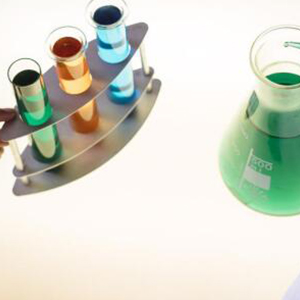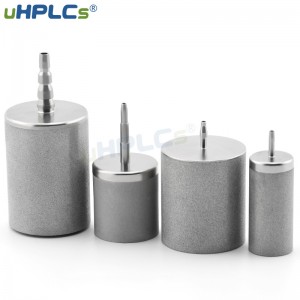A buffer solution is an aqueous solution containing a weak acid and its conjugate base (or a weak base and its conjugate acid). When small amounts of strong acids or bases are added, the pH of the buffer solution changes very little, helping to offset changes in conditions in the analytical method when small environmental factors change. Buffer solutions are used to maintain the pH at an almost constant value. Because of the balance between this weak acid (HA) and its conjugate base, they are resistant to changes in pH.
I. How buffers work
When some strong acid (more H+) is added to an equilibrium mixture of a weak acid and its conjugate base, the equilibrium shifts to the left according to Le Chatelier’s principle, similarly, if a strong base is added to the mixture, the hydrogen ion concentration is reduced by less than the expected amount of the added base.
When preparing buffers, you should follow some general guidelines.
Calibrate the pH meter – ideally, the pH is above and below the target value for the buffer preparation.
Weigh out the buffer salts to provide the desired buffer concentration; add to a volumetric flask containing HPLC grade water and mix well to dissolve.
Measuring the pH of the solution using a pH probe and pH meter.
Adjust the pH to the desired value by adding small amounts of solid acids and bases.
Once the pH is correct, dilute the solution to the desired volume and mix thoroughly.
In HPLC, buffers are often used to control secondary interactions that are often considered “unwanted” in the field of chromatography. They are also used to control the ionization state of the analyte to ensure that it is not present in more than one ionized state. The pKa of a compound represents its pH of 50% ionized and 50% neutral. If you work at this pH, you will see splitting peaks and variable retention times. All methods should strive to be at least two pH units away from the pKa of the target analyte.
II. Prepare a good mobile phase
A further consideration is needed to ensure good method stability when preparing an isocratic mobile phase.
Pre-mix your mobile phase whenever possible; this will eliminate pumping errors. Always use the same preparation method; for example, if you add water first, you should always add water first. If you measure individual components and then mix them, always do it this way. Do not change this procedure, as the results of analyte retention times can vary greatly.
The polarity of the mobile phase controls the retention time of analytes in HPLC. Mobile phases for HPLC typically use a non-polar and polar mixture/combination of miscible organic solvents and water/buffer. Selecting a suitable mobile phase is an essential aspect of HPLC method development. Before using mobile phases and buffers should be filtered using a solvent inlet filter and degassed of all aqueous and organic solvents to remove all particulate impurities and dissolve gases. Stainless steel is more resistant to corrosion, requires no tools or accessories, and prevents particles from entering your pump.
III. Prepared mobile phase
Buffer concentrations are also significant; concentrations below 10 mM are generally not considered to provide the buffering capacity needed to control silanol activity or the ionization state of the compound, and 10 mM would be considered the minimum effective concentration for reversed-phase and HILIC. For other techniques (e.g., size exclusion), significantly higher concentrations are required, and it is not uncommon for these methods to have concentrations over 100 mM. The concentration must be carefully balanced to ensure the solubility of the buffer under all conditions. When working under reversed-phase conditions, if the method contains high levels of organics (e.g., across a gradient), you may need to limit the buffer concentration used to ensure that buffer precipitation does not occur.
Check the compatibility, relative polarity, and miscibility of the solvents being used. Use only high purity solvents for the mobile phase. Water should be HPLC grade or filtered and deionized; clear glass vials generally store the mobile phase because glass is chemically inert and easy to inspect visually.
The contribution of mobile phase relative selectivity is no less significant than that of the stationary phase. When developing robust HPLC methods, attention to selection and preparation is as essential as batch testing of stationary phases.
Post time: Jul-30-2022








